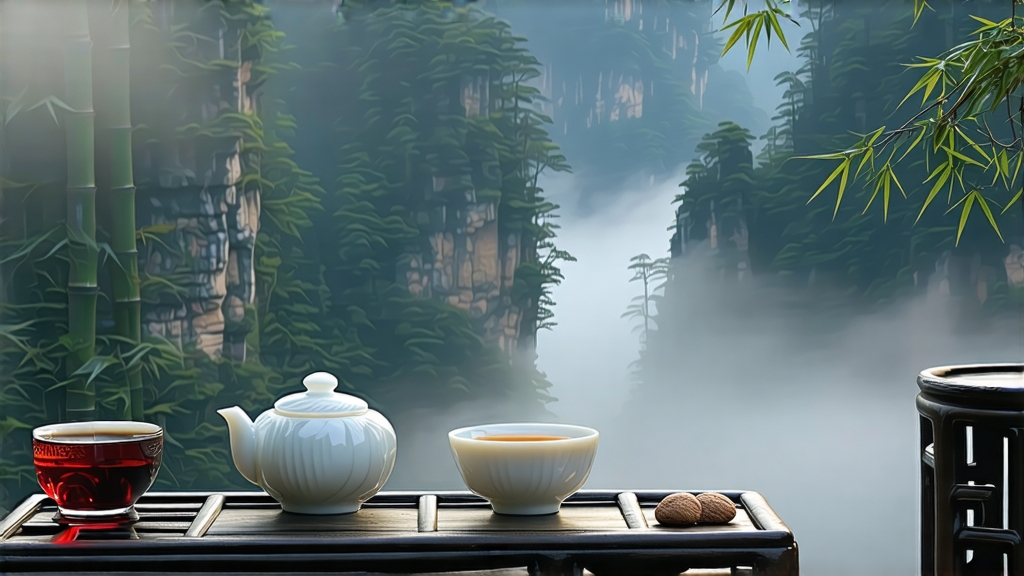
Ask most tea lovers to name the oldest black tea on earth and they will pause; mention Lapsang Souchong, however, and eyes light up with the romance of camp-fires in far-away China. Born in the cool, fog-laced ravines of the Wuyi Mountains in northern Fujian, this extraordinary leaf is not merely a beverage—it is a time capsule of Ming-dynasty ingenuity, Dutch trading ships, and the very word “bohea” that once signified all Chinese black teas on European invoices. Today, while newer red teas crowd the market, Lapsang Souchong remains the charismatic progenitor, equally adored and misunderstood. Let us walk its stony paths, smell its resinous smoke, and learn why a single sip can taste of both dried longan and a pine forest after rain.
-
Historical footprints
Local chronicles credit the accidental birth of Lapsang Souchong to late-Ming army units passing through Tongmu Village in 1646. Farmers, hurriedly drying freshly picked leaves to prevent spoilage, used freshly cut pine boughs as fuel. The smoke impregnated the tea, which nonetheless fetched premium prices from passing Dutch traders delighted by its novel, assertive aroma. By the early Qing, the tea had migrated up the Min River to Fuzhou’s foreign hongs, where it was re-named “Lapsang”—the Cantonese pronunciation of “Lapu Mountain” (original producing area)—and “Souchong,” denoting the fourth and fifth leaves that give the tea its broad, robust character. Thus, centuries before Assam or Ceylon existed on the map, Lapsang Souchong was already the archetype of what Europe would call “black tea.” -
Terroir: why Wuyi tastes like stone and orchids
Tongmu Guan, a protected enclave inside the Wuyi UNESCO World Heritage zone, sits at 27° N latitude where subtropical humidity collides with cool air sliding off 1,800-metre peaks. Day-night temperature swings of 15 °C slow leaf growth, condensing amino acids and polyphenols. The soil is a friable, mineral-rich laterite strewn with weathered tuff and quartz; drainage is so sharp that roots plunge two metres, sipping a cocktail of potassium, magnesium and rare earth elements. These factors gift the base leaf a natural “rock rhyme” (yan yun) reminiscent of Wuyi rock oolongs, a flinty note that balances later smoking. -
Two families, one name: traditional vs. modern Lapsang
Purists divide Lapsang Souchong into two camps. Traditional (also called “smoked”) versions still use the pinewood long kiln (qing lou) built over two centuries ago. Fresh leaves are withered over gentle pine embers, pan-fired at 200 °C for eight minutes, rolled under hemp cloth, then smoked again for six to eight hours while oxygen is restricted to keep the fire smouldering. The result is glossy, midnight-black strips exhaling a scent of burnt caramel and spruce resin.
Modern (or “unsmoked”) Lapsang, developed for contemporary palates sensitive to assertive smoke, omits the final firing stage. Instead, master craftsmen rely on precise oxidation—85 % versus the usual 90 %—and a short charcoal bake using fruit-wood that foregrounds the tea’s innate dried-fruit sweetness. Both styles share the same cultivar, Xiao Ye Zhong (“small-leaf original species”), a close sibling of the Wuyi rock-oolong bushes but with slightly broader leaves and a higher catechin-to-theaflavin ratio ideal for oxidation.
- Crafting the smoke: an artisanal choreography
Visit Tongmu in mid-May and you will see barns built of packed earth and camphor beams, their roofs tiled with thin slate. Inside, three-tiered bamboo racks called zheng long stretch like bleachers. Workers fire pinus taiwanensis logs in a sunken pit; the smoke rises through damp mats, cooling to 35 °C before kissing the withering leaf. Every twenty minutes the tea is gently turned by hand; humidity sensors ensure the smoke stays below 60 % RH so leaves do not bake. When the master judges that the core is still supple—what locals call “soft bone”—the leaf is quickly rolled, breaking cell walls and releasing